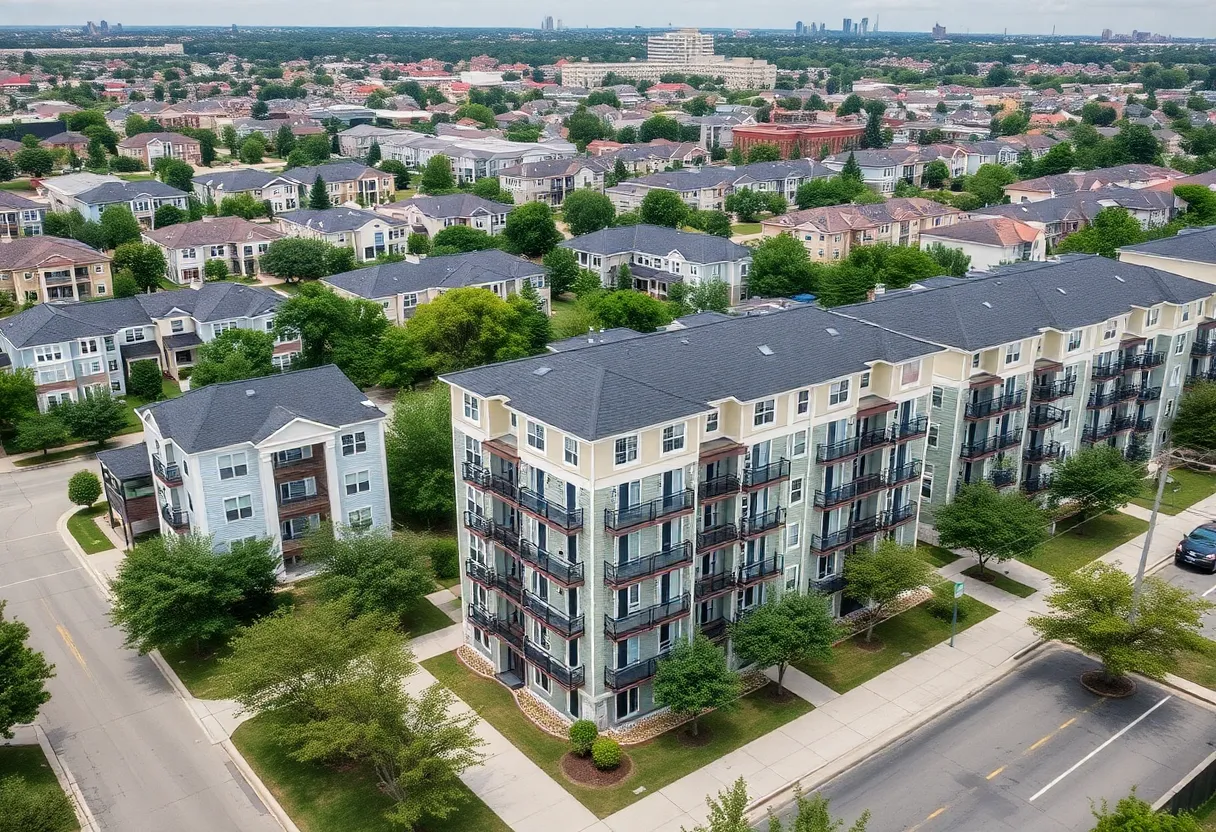News Summary
The Dallas City Council has approved a new building code allowing up to eight residential units in three-story buildings, aimed at addressing the city’s housing crisis. This change is expected to promote the development of ‘missing middle’ housing, providing more affordable options while simplifying the construction process. Supporters believe this amendment will help alleviate a significant housing shortage, with concerns raised about its potential impact on single-family neighborhoods. The council sees this as a crucial step in improving the housing supply and combating affordability issues in Dallas.
Dallas – In a pivotal move to address the housing crisis in the city, the Dallas City Council has approved a new building code that permits up to eight residential units in three-story buildings. This significant change to the city’s building policy is anticipated to help alleviate the ongoing demand for more housing options in Dallas.
The council approved the amendment in late April 2025, marking what is considered a transformative step in reshaping the housing landscape in Dallas. By enabling developers to create denser and more affordable housing, this new code aims to foster the growth of “missing middle” housing, which refers to residential units that are more affordable than single-family homes but less dense than high-rise apartments.
Prior to this change, all developments containing more than two units were classified as commercial projects under the city’s building code. This classification significantly increased construction costs and complicated the development process, discouraging developers from pursuing small-scale apartments. The new amendment is expected to simplify the construction of these units, thus promoting a variety of housing options that meet the needs of residents.
This building code change aligns with the ForwardDallas 2.0 land use plan, which emphasizes the importance of increased density throughout the city. Supporters of the amendment argue that small, sensible changes like this can have a substantial impact on improving neighborhoods and meeting the urgent housing needs of residents.
Proponents highlight a severe housing shortage within Texas, with estimates indicating that an additional 300,000 housing units are needed to meet current demand. This shortage has been partly exacerbated by restrictive zoning laws, which have led to the loss of potential housing units, according to statements from former council members. The newly approved code is viewed as a vital response to this pressing issue, aimed at addressing the affordability crisis impacting many residents.
Despite the supportive view towards the new code, concerns have been raised regarding the potential transformation of single-family neighborhoods due to increased density. Critics argue that such changes could alter the character of these areas and lead to increased congestion and other challenges associated with denser housing development.
In response to these concerns, the council has stressed that enhancing the housing supply is critical in light of current affordability crises affecting many residents. The approval of this new code is seen as one aspect of a broader strategy to combat housing shortages in Dallas and across Texas.
In addition to changing the building code, discussions are ongoing regarding potential regulatory reforms that could further empower developers and neutralize existing restrictions on lot sizes. These proposals aim to continue addressing the housing supply issue while also ensuring that neighborhood integrity is maintained.
While the newly approved building code will not eliminate the housing crisis entirely, city officials believe it is a crucial step in relieving some of the pressures in the housing market. The council’s decision is viewed as setting a precedent that could serve as a model for other cities grappling with similar challenges related to housing shortages.
As Dallas moves forward with these changes, the city will continue to monitor the impact of the new building code on the housing supply and community dynamics, striving to find a balance that accommodates growth while preserving the character of existing neighborhoods.
Deeper Dive: News & Info About This Topic
HERE Resources
Southern Dallas-Fort Worth Metroplex Experiences Rapid Growth
Trammell Crow Company Begins Construction on Major Industrial Project
Leadership Change in Southern Dallas: A New Opportunity
Federal Investigation Launched into Controversial EPIC City Development
US Inflation Drops to Lowest Rate in Over Four Years
Northpoint Center Sold for $34 Million in Arlington Heights
McKinney, Texas Named Most Affordable City in the U.S.
Construction Begins on $1 Billion University Hills Development in Dallas
Dallas City Council Reviews Parking Reform Proposal
Dallas Luxury Real Estate Market Experiences Surge
Additional Resources
- Planetizen: Dallas Code Reform Makes Way for Missing Middle Housing
- Wikipedia: Urban Housing Development
- Slate: Dallas’ Affordable Housing Crisis and Building Code
- Google Search: Dallas housing crisis 2025
- Dallas Observer: Dallas Adopts Residential Code Change
- Google Scholar: Dallas missing middle housing
- Candy’s Dirt: Dallas Opens the Door to Low Intensity Density
- Encyclopedia Britannica: Dallas housing issues
- Dallas News: Could Dallas Become a National Model for Urban Planning?
- Google News: Dallas building code changes

Author: STAFF HERE DALLAS WRITER
The DALLAS STAFF WRITER represents the experienced team at HEREDallas.com, your go-to source for actionable local news and information in Dallas, Dallas County, and beyond. Specializing in "news you can use," we cover essential topics like product reviews for personal and business needs, local business directories, politics, real estate trends, neighborhood insights, and state news affecting the area—with deep expertise drawn from years of dedicated reporting and strong community input, including local press releases and business updates. We deliver top reporting on high-value events such as the State Fair of Texas, Deep Ellum Arts Festival, and Dallas International Film Festival. Our coverage extends to key organizations like the Dallas Regional Chamber and United Way of Metropolitan Dallas, plus leading businesses in telecommunications, aviation, and semiconductors that power the local economy such as AT&T, Southwest Airlines, and Texas Instruments. As part of the broader HERE network, including HEREAustinTX.com, HERECollegeStation.com, HEREHouston.com, and HERESanAntonio.com, we provide comprehensive, credible insights into Texas's dynamic landscape.





